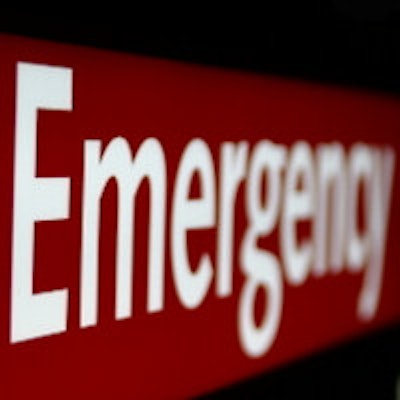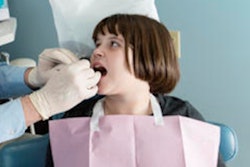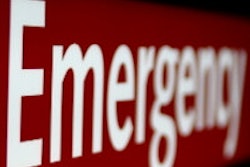
The North Carolina State Board of Dental Examiners has suspended the sedation permit of one dentist and revoked the license of another following the deaths of two patients who were deemed "not good candidates" for sedation.
For the second time this year, the dental board is investigating the death of a patient that may be linked to oversedation.
The most recent case involved Williamston dentist Zachary Harrison, DDS, whose sedation permit was suspended by the board on December 2. The board said there was evidence that Dr. Harrison "oversedated a patient who was not a good candidate for out-patient deep sedation, which resulted in the death of that patient," according to the order.
Dr. Harrison's patient died on October 1, and he reported the death to the board on October 4, the board said.
"It was an unfortunate incident that had nothing to do with sedation or dental procedures," Dr. Harrison told DrBicuspid.com. "It was something that just happened, and hopefully when the investigation is over and everything comes to light, we can go back to business as usual."
The suspension came three months after the board revoked the license of Toni Mascherin, DDS, who had a practice in Cary, NC. Dr. Mascherin's patient, Catherine Thoits, died in November 2012 from an overdose of Halcion while getting an extraction, according to the coroner's report.
Dr. Mascherin had improperly ignored the patient's history of sleep apnea and her fluctuating oxygen levels during the surgery, according to the board's investigation. And when Dr. Mascherin's assistant noted that the patient had turned blue and suggested calling paramedics, she rejected it, saying she wanted to finish the surgery, the board said.
"Our board is very upset about these two incidents and the fact that two families had to suffer," Bobby White, the dental board's chief executive, told DrBicuspid.com. "To have these two deaths close together in time is very disconcerting to our board."
The number of North Carolina dentists with sedation permits, which allows them to administer general anesthesia and oral sedation, has grown from 11.7% in 2010 to 13.4% in 2013. Currently, 615 dentists of the state's 4,575 dentists have sedation permits.
"We have not seen a huge increase in the use of sedation in the past five years," White noted.
The board added rules regarding sedation in 2002 and revised them in 2008. The rules require dentists to report any adverse occurrences involving sedation to the board.
There is no national data regarding dental office deaths or the more general topic of emergencies, said Larry Sangrik, DDS, an Ohio dentist who has lectured on emergency preparedness for dental practices for 14 years. Dr. Sangrik offers moderate conscious sedation at his practice and volunteers for the nonprofit Raven Maria Blanco Foundation, an advocacy group formed after an 8-year-old girl's sedation-related death in 2010.
Pediatric sedation
Last week, a 3-year-old girl in Hawaii suffered brain damage after she was allegedly given too much anesthesia during a root canal procedure by a dentist on Oahu.
Pediatric sedation is trickier, Dr. Sangrik noted. First, it takes much less time and a lower amount of drugs to sedate children.
"The window of opportunity to sedate a child is much smaller compared to adults," he said. "You've got a smaller target to get them sedated before they fall into general anesthesia."
Also, children have less residual air in their lungs than adults, so if they stop breathing they can quickly suffer brain damage.
If a sedated adult falls into general anesthesia and their respiration becomes compromised, a dentist has about three to four minutes to address the problem and remedy it, Dr. Sangrik explained.
"But with a child like the 3-year-old girl in Hawaii, you've got at most 90 seconds before there's brain damage," he noted. "It's the anatomy of situation. You've got a smaller window you're aiming at, and if the patient becomes oversedated then you've got a very tight opportunity to recover them."
Some states have rules that exceed the ADA's guidelines for pediatric sedation. For instance, Ohio requires dentists to have advanced credentials to do oral sedation on children.
"That is a responsible approach, because there are anatomical and physiological differences with sedating kids," Dr. Sangrik said.
Some pediatric dentists prefer treating children in hospitals using general anesthesia, he said. But in such cases, costs become prohibitive because the hospital bill usually exceeds dental fees, and insurance doesn't cover hospital charges.
Increasing number of medical emergencies
Dr. Sangrik cited several reasons that medical emergencies in dental offices will likely increase:
- Dental procedures are becoming more complex and sophisticated, necessitating more use of sedation and anesthesia.
- There is a growing aging population.
- Successes in medicine mean dentists are treating people with much more complex medical histories compared with a generation ago.
"The chances of a medical emergency happening to one of my patients now compared to a generation ago is much higher and that's not bad, it's just reality," Dr. Sangrik said. "But as a profession, we're not really studying the issue and we should."
Most dentists are not sufficiently trained or prepared to handle emergencies, he said.
"The situation regarding general medical emergency preparedness is appalling," Dr. Sangrik said.
Many emergencies stem from failure to manage a patient's airway, he noted. Airways can be obstructed in many ways: medications, a broken tooth or crown, broken instruments, or a dropped implant wrench.
"That's a scenario that any dentist should be capable of managing," Dr. Sangrik said. "But we don't have a generalized competency about managing general medical emergencies. That's what I believe is the underlying problem, and there's no national standard."
But, he pointed out, dental office deaths are only part of the problem because most emergencies are not fatal.
And, Dr. Sangrik noted that sedation can be a way to overcome the main obstacle of getting people into the dentist's office: fear.
"There's a growing recognition in the profession that a lot of dentistry is being left undone because of fear and anxiety," he said. "There's an awakening that we need to help people, so this is something that can address the fear and anxiety."
Be prepared
Although dentists are trained to handle emergencies in dental school, they need to take period courses to be prepared, Dr. Sangrik said. "You learned it in dental school, but you don't remember it 20 years out," he noted. "When you have a major crisis occur and it's something you don't manage on a day-to-day basis, even if you're trained, there's a considerable level of panic that sets in."
He advises dentists to train their staff, hold periodic mock drills, and have written emergency plans.
"You don't want to rely on memory if a person were to stop breathing or has chest pains," Dr. Sangrik said. "So that you don't miss a step, everything should be written down."
Dentists should also have basic medications and basic emergency equipment on hand. "The biggest thing dentists lack in their office is adequate oxygen equipment," he noted.
Dr. Sangrik said dental emergencies occur for three reasons:
- They can result from a dentist's error through oversedation or by breaking an instrument or tooth that blocks a patient's airway.
- They can be a reasonable complication of satisfactory dentistry. If a patient faints, it's a medical emergency even if the dentist didn't do anything wrong.
- Random emergencies just occur.
"It might be at Wal-Mart after the appointment or it could be right in the middle of a composite," Dr. Sangrik said. "Medical emergencies occur for various reasons and not all of them are inherently the dentist's fault."



















